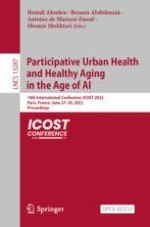1 Introduction
2 Method
2.1 Collecting Data
2.2 Data Analysis
3 Results
3.1 Year of Publication
3.2 Subjects
3.3 Clothing Body Type
3.4 Considerations When Purchasing Clothing
Division | N (%) | ||
|---|---|---|---|
Functionality and practicality | Convenience of putting on and taking off | very much considered | 46 (45) |
much considered | 41 (40) | ||
So-so | 16 (15) | ||
Dimensional conformity | very much considered | 35 (35) | |
much considered | 45 (45) | ||
So-so | 20 (20) | ||
Ease of repair | very much considered | 22 (24) | |
much considered | 46 (50) | ||
So-so | 24 (26) | ||
Clothing usability | very much considered | 21 (22) | |
much considered | 57 (60) | ||
So-so | 17 (18) | ||
Low price | very much considered | 11 (12) | |
much considered | 45 (49) | ||
So-so | 36 (39) | ||
Aesthetic | Palatability | very much considered | 25 (26) |
much considered | 38 (40) | ||
So-so | 32 (34) | ||
Disability area coverage | very much considered | 27 (29) | |
much considered | 31 (33) | ||
So-so | 36 (38) | ||
Fashion trends | very much considered | 12 (15) | |
much considered | 21 (25) | ||
So-so | 49 (60) | ||
3.5 Clothing Improvements
Division | N (%) | |
|---|---|---|
Upper | Sleeve circumference | 46 (11) |
Extra space | 87 (20) | |
upper length | 49 (11) | |
Sleeve length | 115 (27) | |
Jacket length | 133 (31) | |
Lower | Waist circumference | 159 (21) |
Rise length | 176 (23) | |
Hip circumference | 114 (15) | |
Pants length | 206 (27) | |
Knee circumference | 104 (14) | |
Division | N (%) | |
|---|---|---|
Upper | Fastening | 39 (22) |
Sleeve length | 66 (38) | |
Extra space | 19 (11) | |
Armpit | 22 (13) | |
Jacket length | 29 (16) | |
Lower | Fastening | 31 (13) |
Rise length | 35 (15) | |
Hip circumference | 20 (8) | |
Pants length | 113 (48) | |
Pants circumference | 38 (16) | |
3.6 Clothing Design
Division | N (%) | |
|---|---|---|
Color | Pastel color | 28 (9) |
Achromatic color | 183 (58) | |
Colorful | 104 (33) | |
Adjustment location | No adjustment | 54 (17) |
Front adjustment | 231 (74) | |
Adjustment below armpit | 16 (5) | |
Shoulder adjustment | 13 (4) | |
Fastening | Button | 334 (51) |
Zipper | 245 (37) | |
Velcro | 78 (12) | |
Finishing | Common | 174 (37) |
Button | 125 (26) | |
Rubber band | 94 (20) | |
Velcro | 82 (17) | |
